There will be no White Christmas for me.
It is good to be back.
~billy
Tea reviews and Tea related subjects
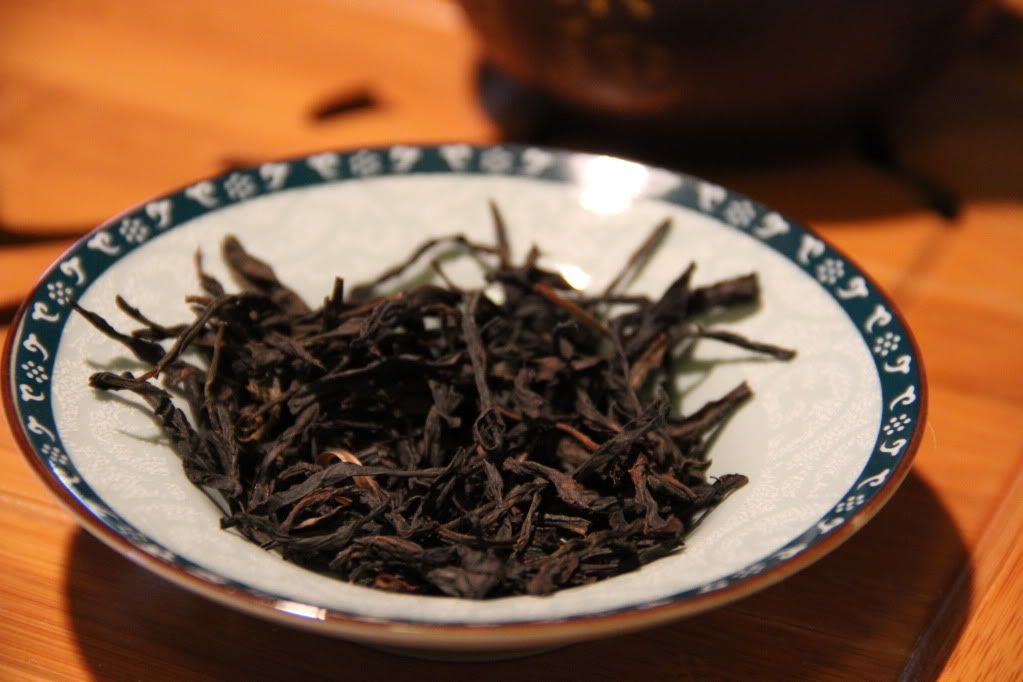 In the dry leaf, strawberry is the most powerful scent.
In the dry leaf, strawberry is the most powerful scent.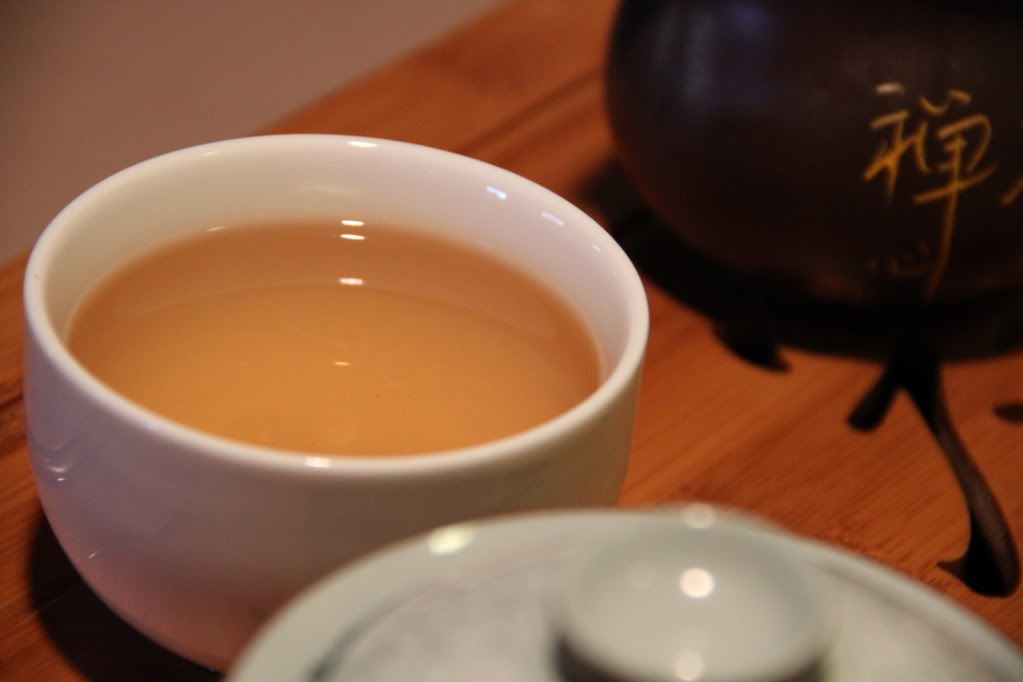 Again, the rising star in the taste is the ever powerful strawberry, leaping forth as the victor of the most profound taste.
Again, the rising star in the taste is the ever powerful strawberry, leaping forth as the victor of the most profound taste.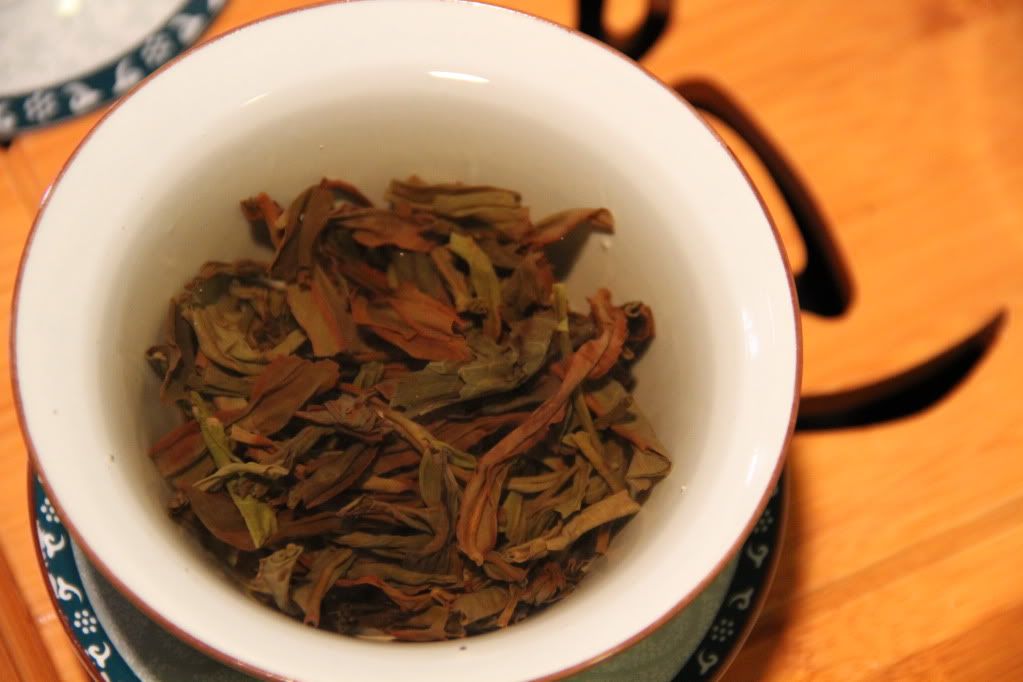 This is a wonderful tea, and as you can see from the infusing leaves, the quality is quite apparent. There are many different oxidation levels and I think that it is the blending of those differences that creates the unique characteristics of this tea.
This is a wonderful tea, and as you can see from the infusing leaves, the quality is quite apparent. There are many different oxidation levels and I think that it is the blending of those differences that creates the unique characteristics of this tea.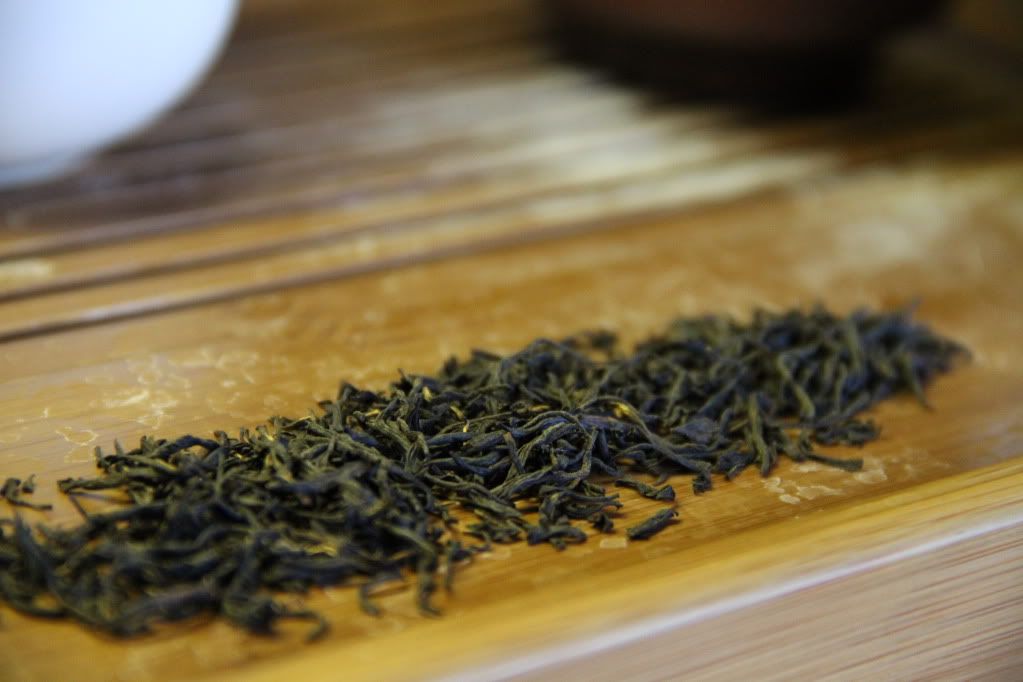 The aroma wafting off of the liquor is very fruity, with the essence of cherry and honey.
The aroma wafting off of the liquor is very fruity, with the essence of cherry and honey.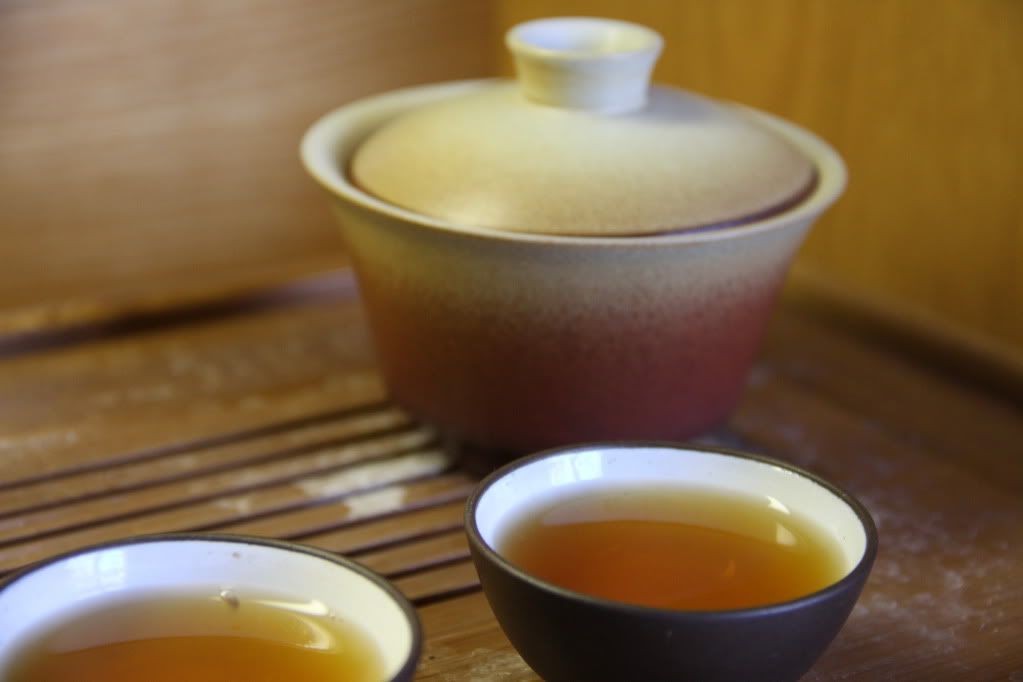 As I sip my cup, the full flavor shows;
As I sip my cup, the full flavor shows;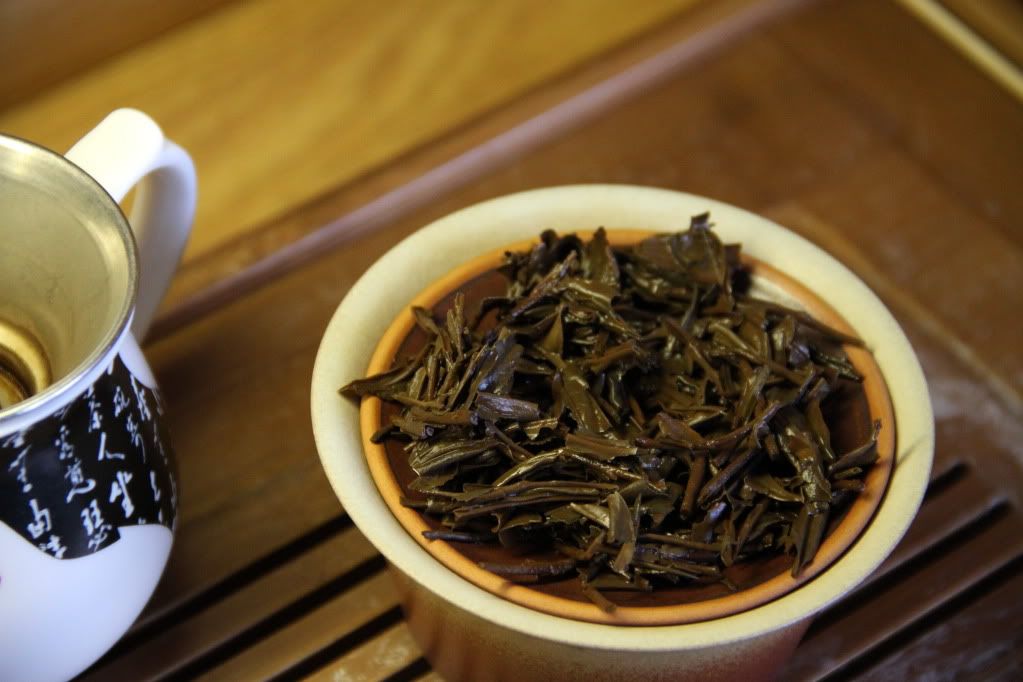 The tea lasts quite a long time and it deserves the title of a GongFu.
The tea lasts quite a long time and it deserves the title of a GongFu. This tea is from the Haiwan factory in Xishuangbanna. This tea has many memories for me, as it was my first sheng pu'erh cake that I purchased. Learning how to brew this tea was trial and error for quite a while as I tried to find my bearings.
This tea is from the Haiwan factory in Xishuangbanna. This tea has many memories for me, as it was my first sheng pu'erh cake that I purchased. Learning how to brew this tea was trial and error for quite a while as I tried to find my bearings.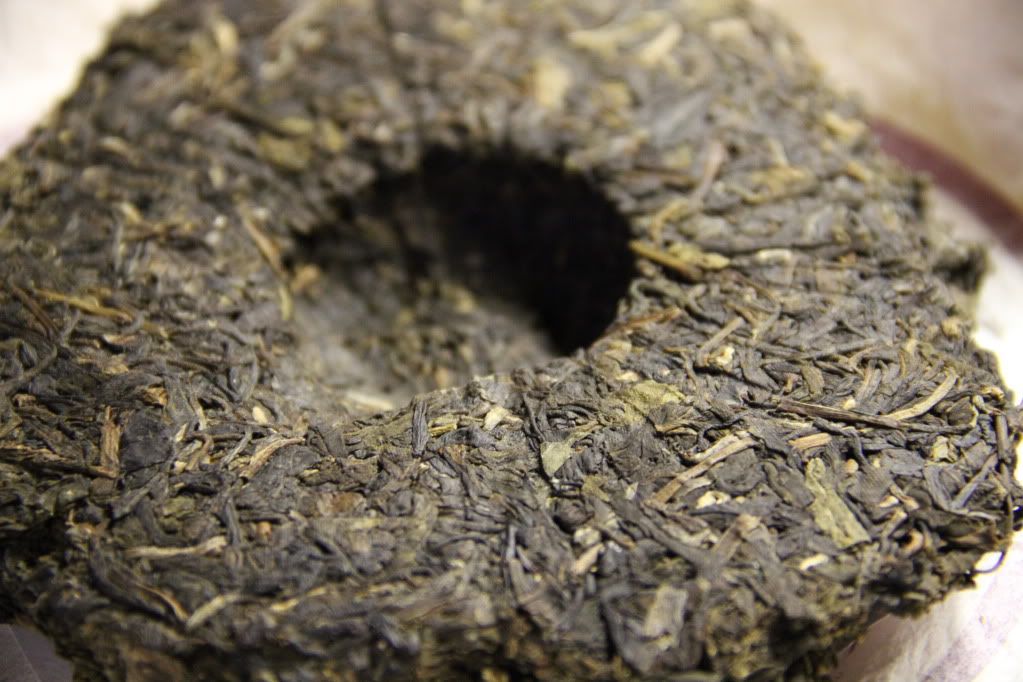 The dry leaf smells of tobacco, chocolate and some form of foliage. I cannot put my finger on what vegetal smell arises from the leaf.
The dry leaf smells of tobacco, chocolate and some form of foliage. I cannot put my finger on what vegetal smell arises from the leaf. The aroma of the liquor is exquisite. There are scents of roasted nuts, savory qualities and a sort of "well-seasoned" smell.
The aroma of the liquor is exquisite. There are scents of roasted nuts, savory qualities and a sort of "well-seasoned" smell. In the taste there is watercress up front.
In the taste there is watercress up front. The endurance of the hog related qualities is unshakable. It lasts for quite some time!
The endurance of the hog related qualities is unshakable. It lasts for quite some time! Rummaging through the wet leaves, I spot a few surprises.
Rummaging through the wet leaves, I spot a few surprises. This is a landmark for me, as it is my first encounter with a CNNP cake. In some cases that can be good or bad, so it seems. There is much information floating around about CNNP cakes that I have been trying to make sense of. I understand the basic concept of the government control, but everything else is a bit ambiguous.
This is a landmark for me, as it is my first encounter with a CNNP cake. In some cases that can be good or bad, so it seems. There is much information floating around about CNNP cakes that I have been trying to make sense of. I understand the basic concept of the government control, but everything else is a bit ambiguous. In my basic understanding of the recipe number, in this case being "7581," the first two numbers indicate the year that the recipe was made. In this case, 1975.
In my basic understanding of the recipe number, in this case being "7581," the first two numbers indicate the year that the recipe was made. In this case, 1975. The brick is not as heavily condensed as it looks. It actually pries apart very nicely with just a butter knife. I have not upgraded to a pu'erh pick or knife yet, but that will be fixed sooner or later. Purchases are unpredictable for me, seeing as I am a college student and I always regulate my money pretty carefully.
The brick is not as heavily condensed as it looks. It actually pries apart very nicely with just a butter knife. I have not upgraded to a pu'erh pick or knife yet, but that will be fixed sooner or later. Purchases are unpredictable for me, seeing as I am a college student and I always regulate my money pretty carefully. The dry leaf smells of nuts, leaves, and wood.
The dry leaf smells of nuts, leaves, and wood. The nose of the liquor was full of surprises and unconventional characteristics.
The nose of the liquor was full of surprises and unconventional characteristics. They were thoroughly enjoyed for the next 7 infusions. Those tastes and textures maintained their consistency throughout the session, only dwindling after the 7th infusion.
They were thoroughly enjoyed for the next 7 infusions. Those tastes and textures maintained their consistency throughout the session, only dwindling after the 7th infusion.
 This bing is good looking. There is a healthy mix of full leaves and buds and the colors are eye-catching.
This bing is good looking. There is a healthy mix of full leaves and buds and the colors are eye-catching.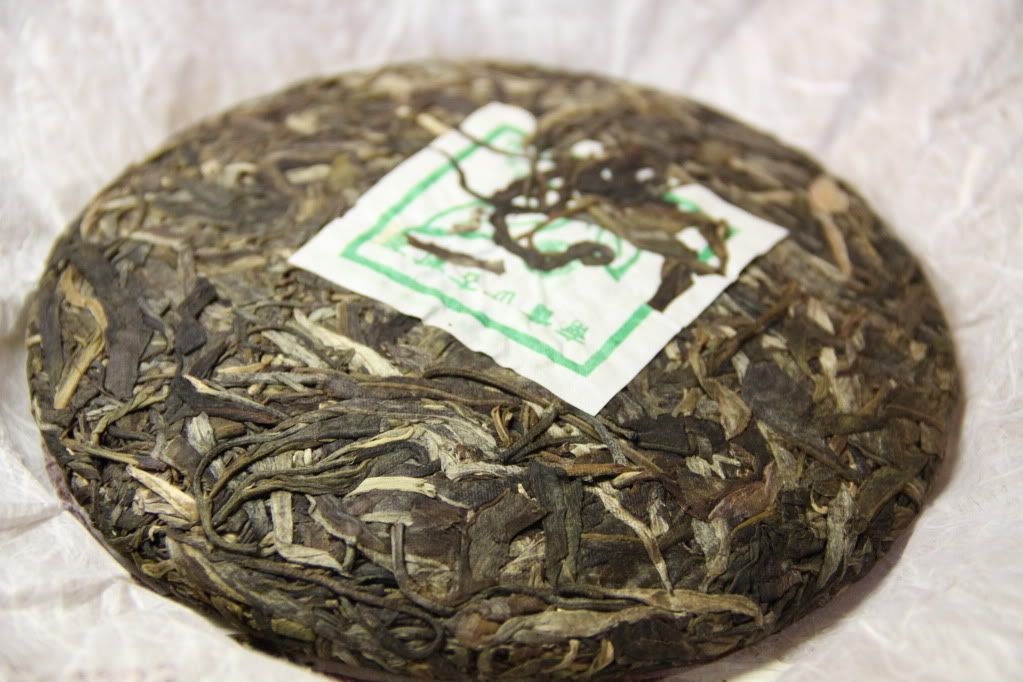 The scents coming off of the cake is very light. It reminds me of the smell of oatmeal; a weak grain sort of aroma. Next, add some rose petals and cocoa. That is the basic aroma of this bing.
The scents coming off of the cake is very light. It reminds me of the smell of oatmeal; a weak grain sort of aroma. Next, add some rose petals and cocoa. That is the basic aroma of this bing.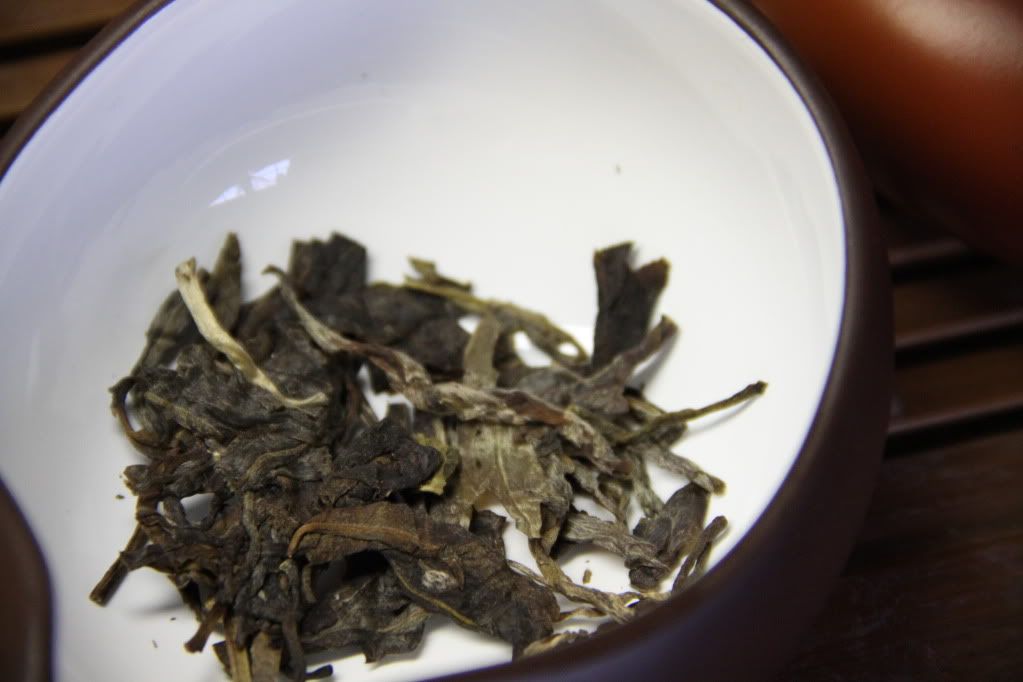 The liquor smells basically like the dry leaves except a bit more strongly expressed.
The liquor smells basically like the dry leaves except a bit more strongly expressed.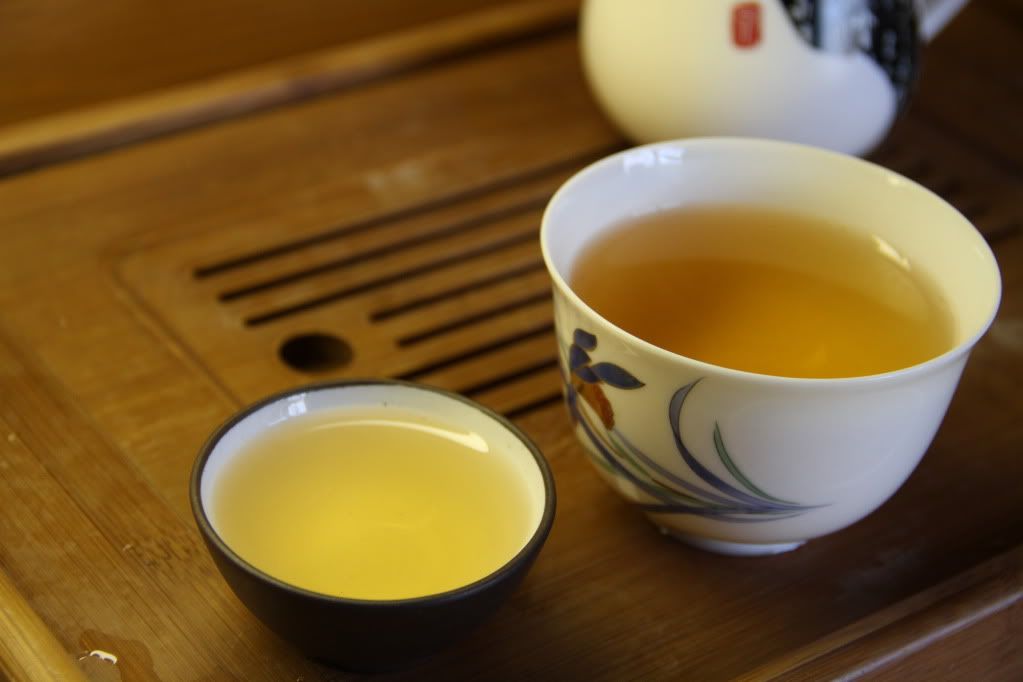 The following infusions present different personalities of this cake.
The following infusions present different personalities of this cake.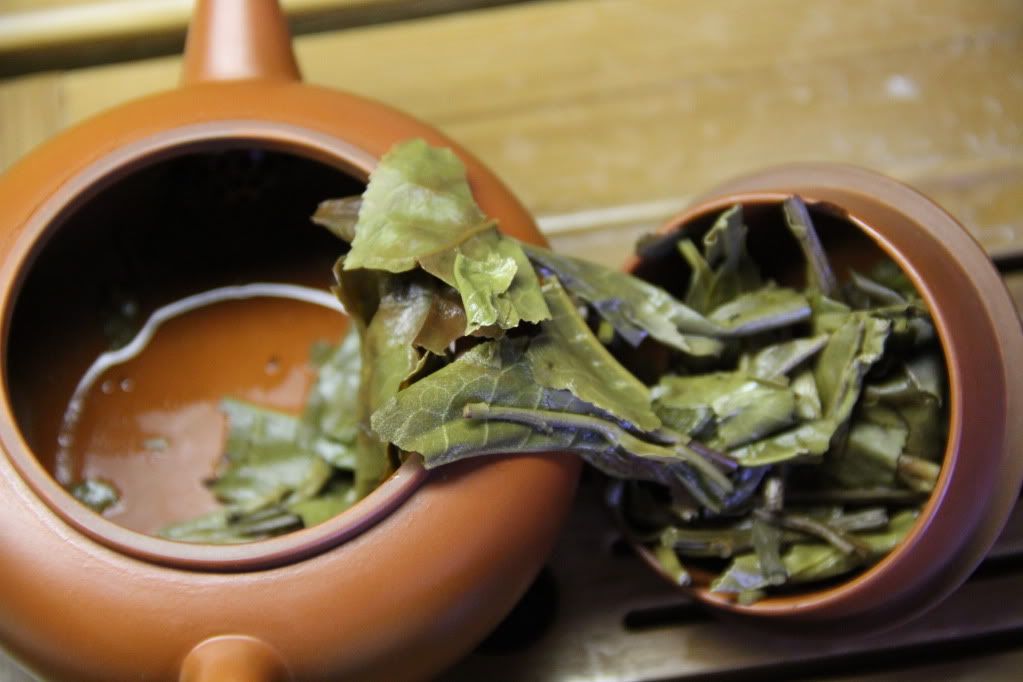 This cake does not have too many dimensions to it, but it is good quality. I will love to see what this cake will be a few years down the road.
This cake does not have too many dimensions to it, but it is good quality. I will love to see what this cake will be a few years down the road.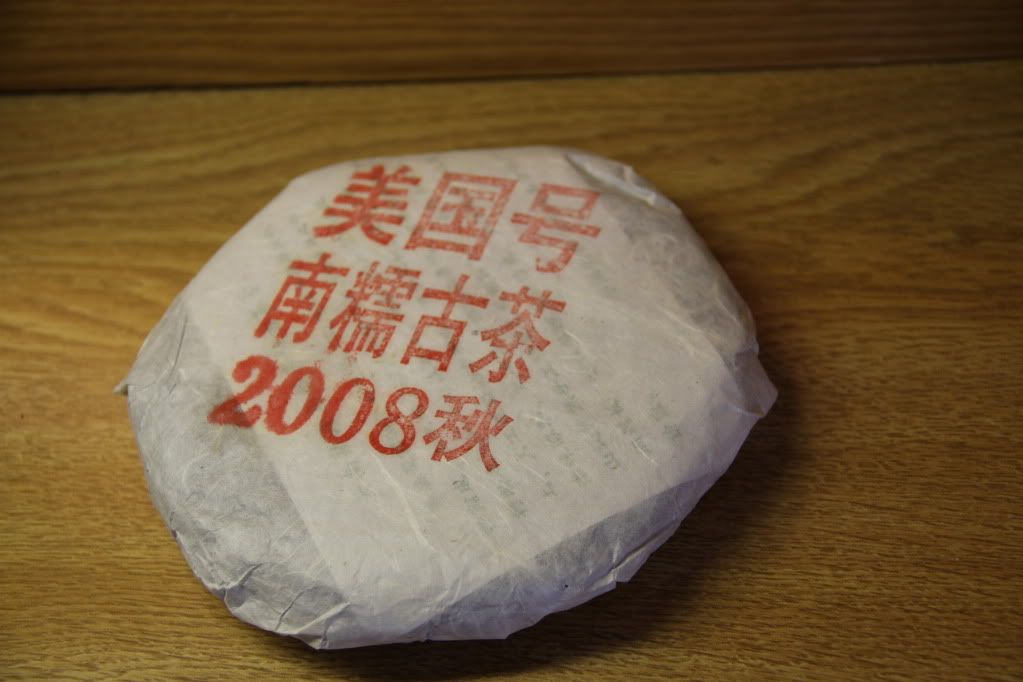 This is a cake that was sourced and produced by Puerh Shop.
This is a cake that was sourced and produced by Puerh Shop.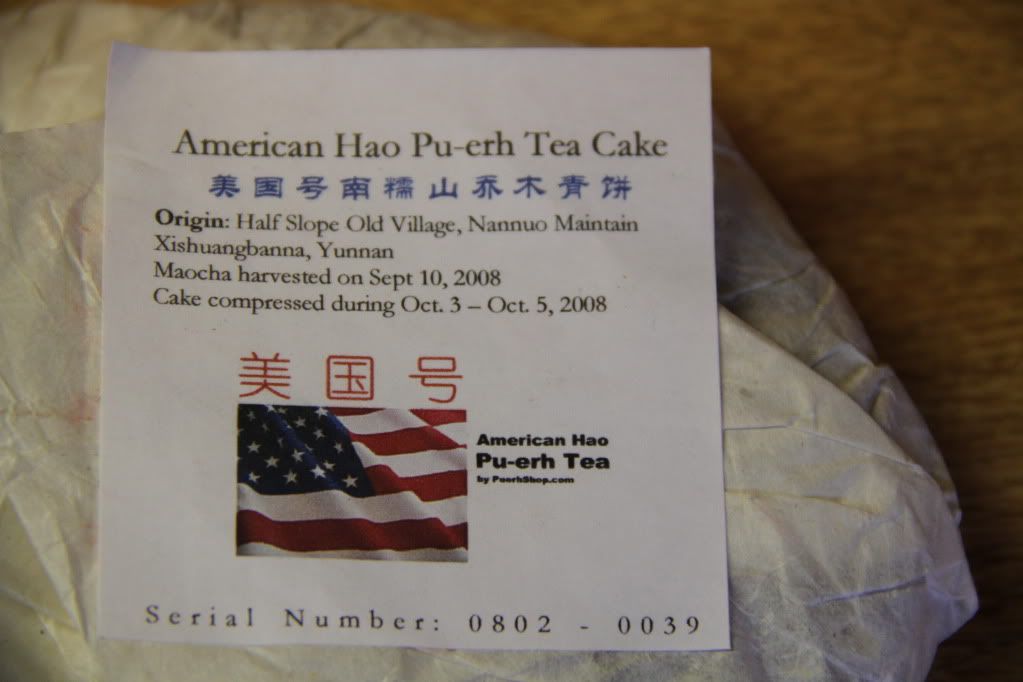 The American flag is a great touch. I feel like this was somewhat produced to fit the American specialty market, and they did a wonderful job.
The American flag is a great touch. I feel like this was somewhat produced to fit the American specialty market, and they did a wonderful job. The cake is very pretty! There are many full leaves and buds. The compression on the cake was enough to hold it together, but not enough to make me take a knife to it. I was able to pull out full leaves very easily with just my hands.
The cake is very pretty! There are many full leaves and buds. The compression on the cake was enough to hold it together, but not enough to make me take a knife to it. I was able to pull out full leaves very easily with just my hands.
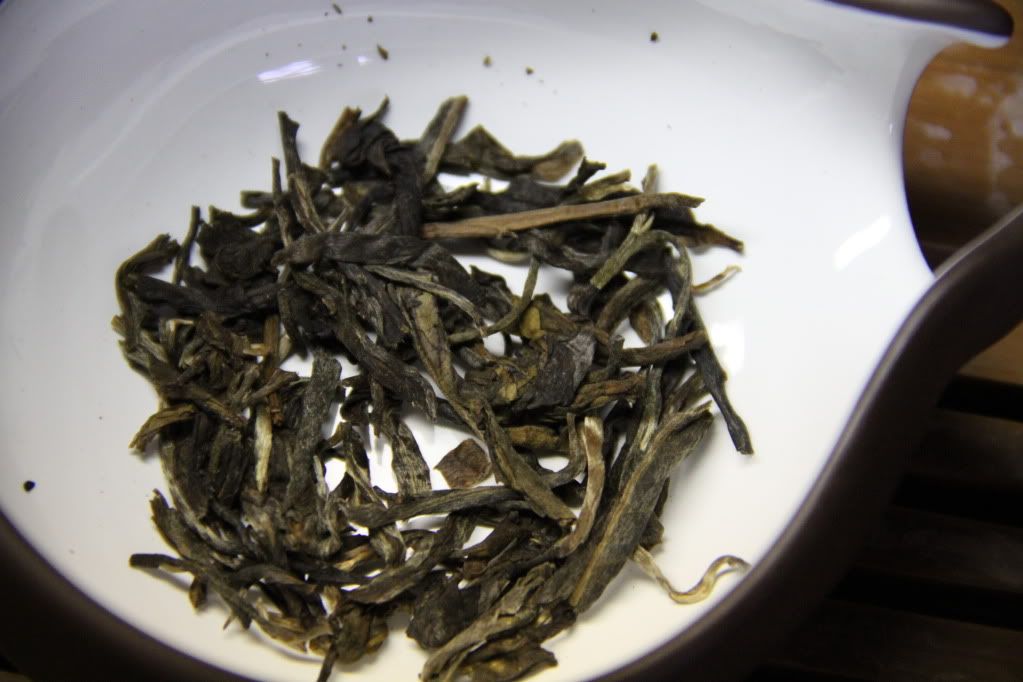 I tend to like to brew shengs with a little less than the recommended amount of leaves because I do not want to pull out too much of the bitterness that sometimes comes with shengpu.
I tend to like to brew shengs with a little less than the recommended amount of leaves because I do not want to pull out too much of the bitterness that sometimes comes with shengpu.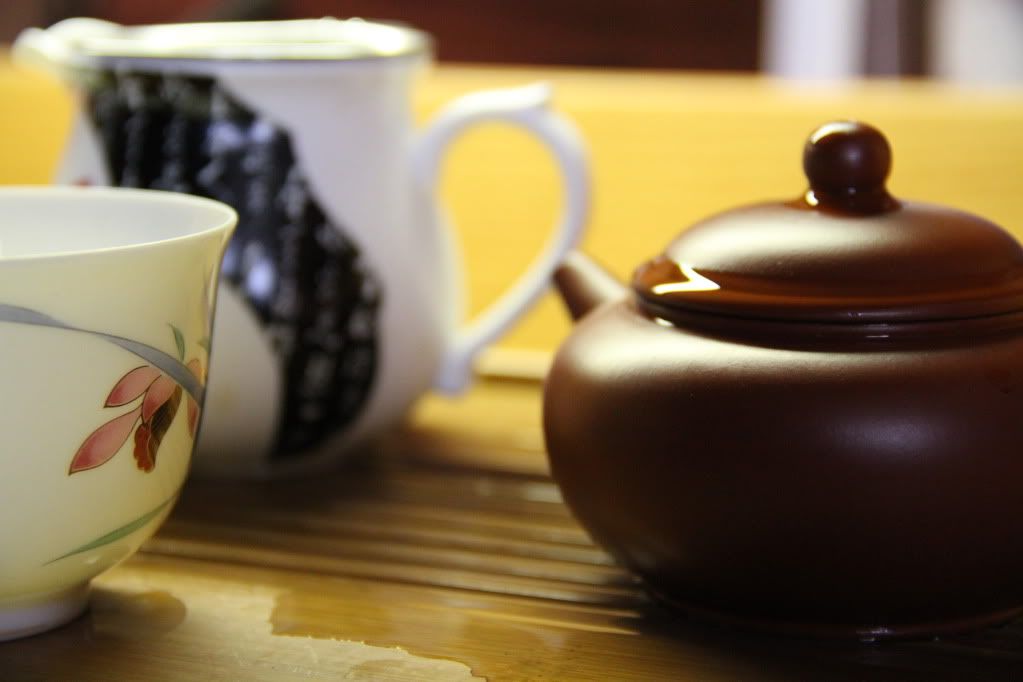 The taste really presented a vast amount of flavors for me to keep track of. It is difficult to narrow it down so will list them all:
The taste really presented a vast amount of flavors for me to keep track of. It is difficult to narrow it down so will list them all: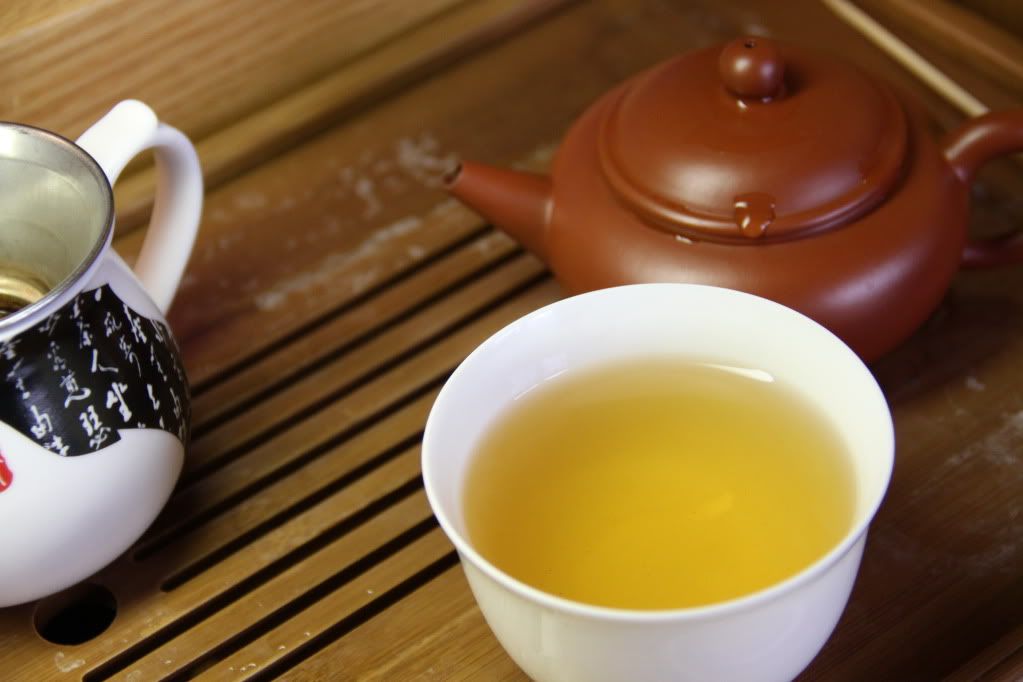 With all puerh, there is a definite earthy quality that can be presented in different tastes. With this cake it was shown through deep wood flavors.
With all puerh, there is a definite earthy quality that can be presented in different tastes. With this cake it was shown through deep wood flavors.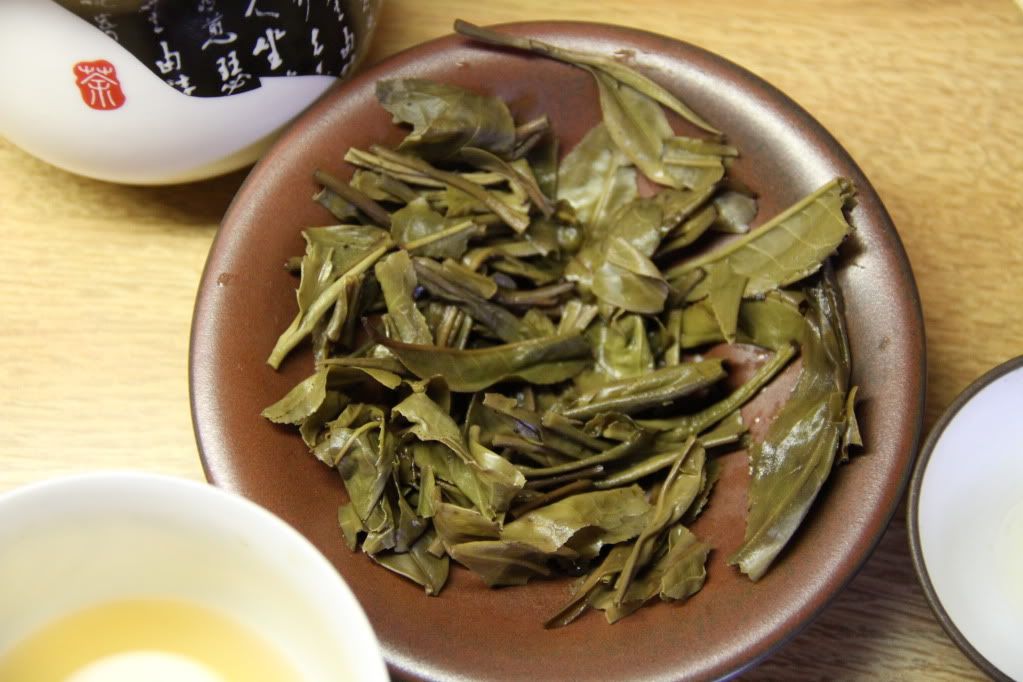 This cake still has a youthful vigor to it, but it has matured to a wonderfully enjoyable stage. I would recommend this cake to anyone trying to get into the flavors of shengpu.
This cake still has a youthful vigor to it, but it has matured to a wonderfully enjoyable stage. I would recommend this cake to anyone trying to get into the flavors of shengpu. Dunn Hall Tea Time has been an almost weekly event for about a year.
Dunn Hall Tea Time has been an almost weekly event for about a year.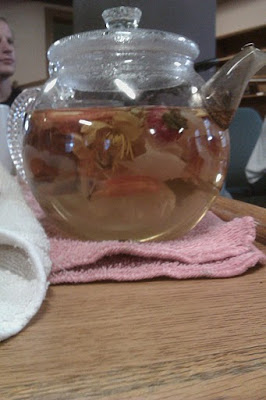 I brought and served an interpretation of an eight treasures tisane blend, and a 2009 autumnal flush darjeeling.
I brought and served an interpretation of an eight treasures tisane blend, and a 2009 autumnal flush darjeeling. The man hosting the event brought a chocolate mint black tea, and a few Chinese greens and oolongs.
The man hosting the event brought a chocolate mint black tea, and a few Chinese greens and oolongs. It was an enjoyable time of intellectual conversation, musical talent and appreciation, opposing opinions and good old fashioned brotherhood.
It was an enjoyable time of intellectual conversation, musical talent and appreciation, opposing opinions and good old fashioned brotherhood.
